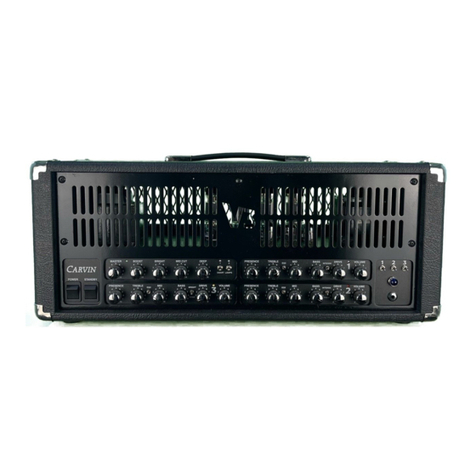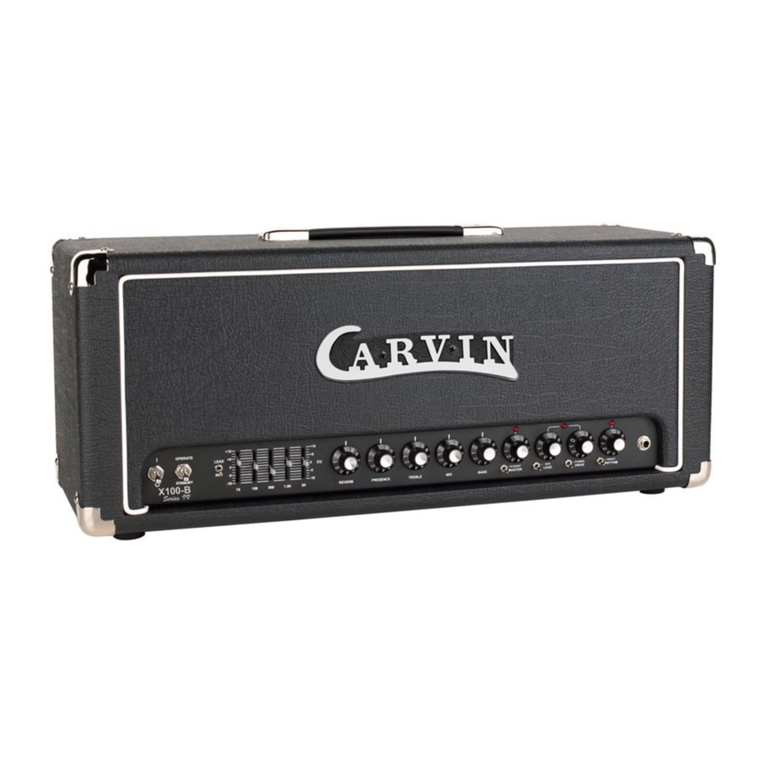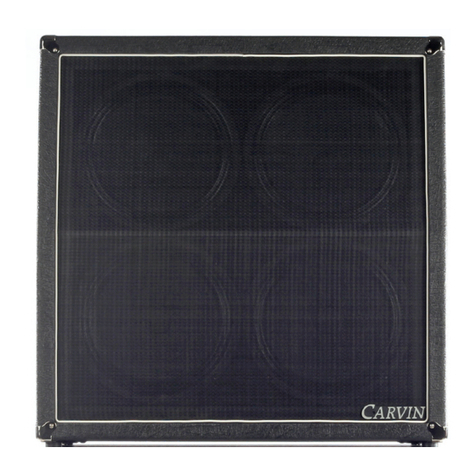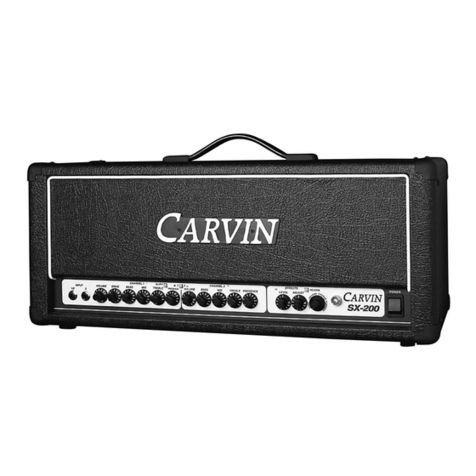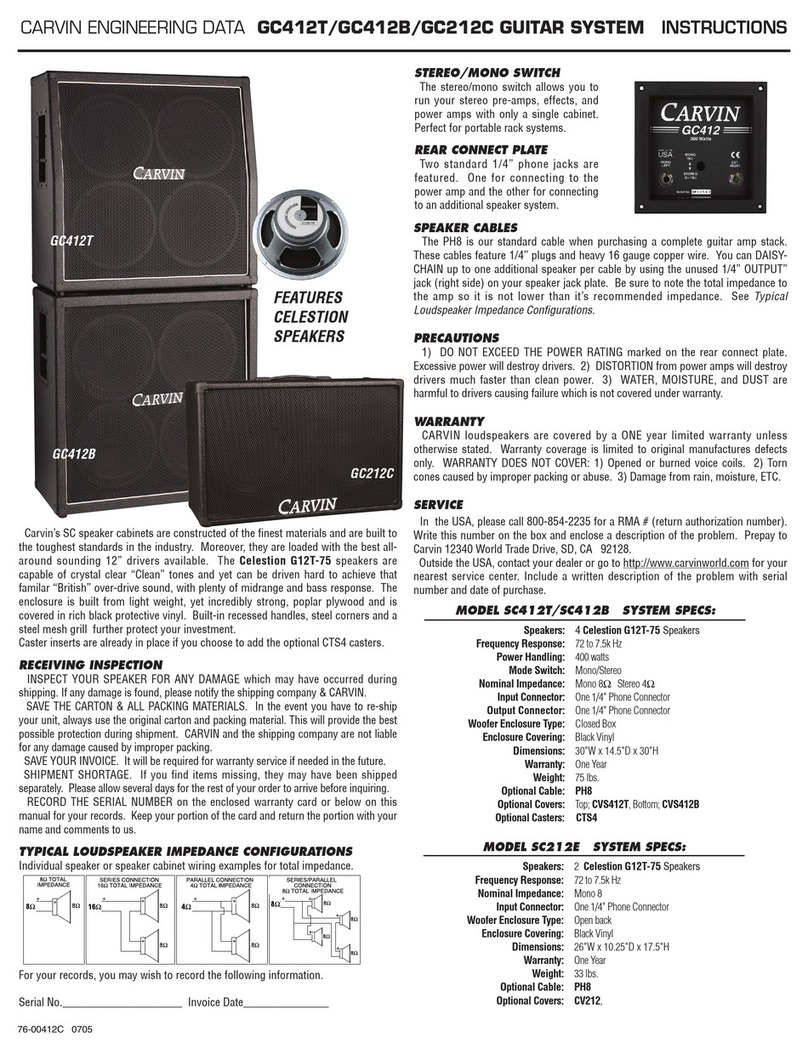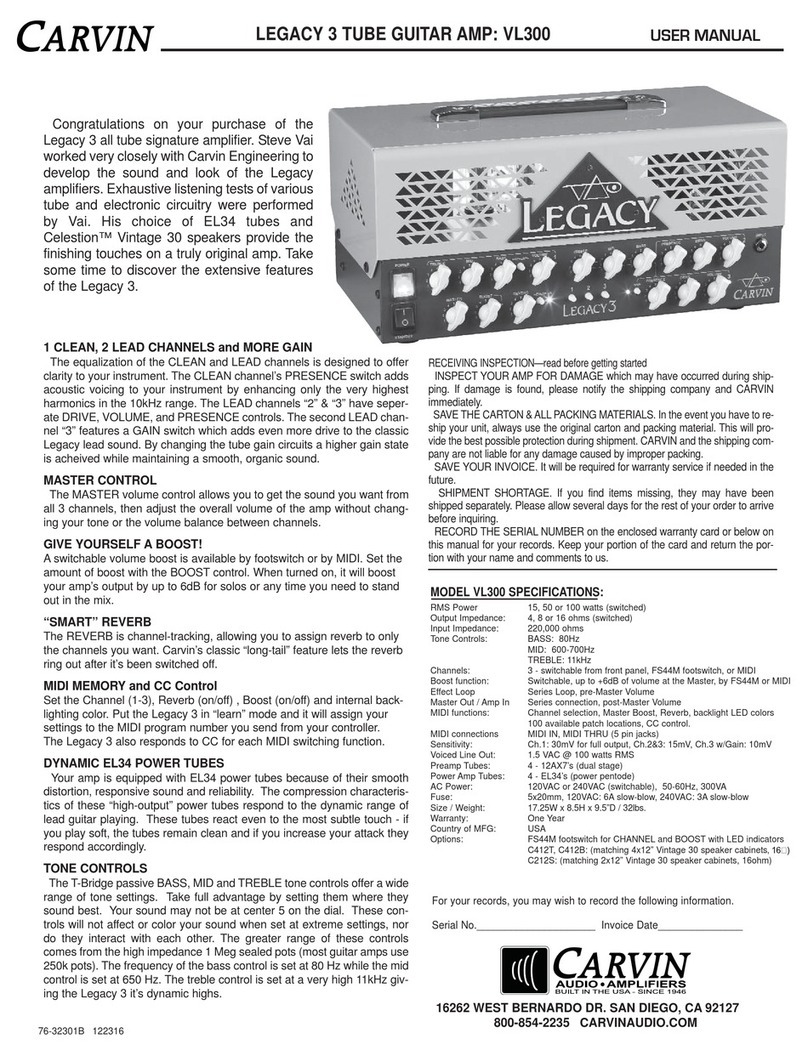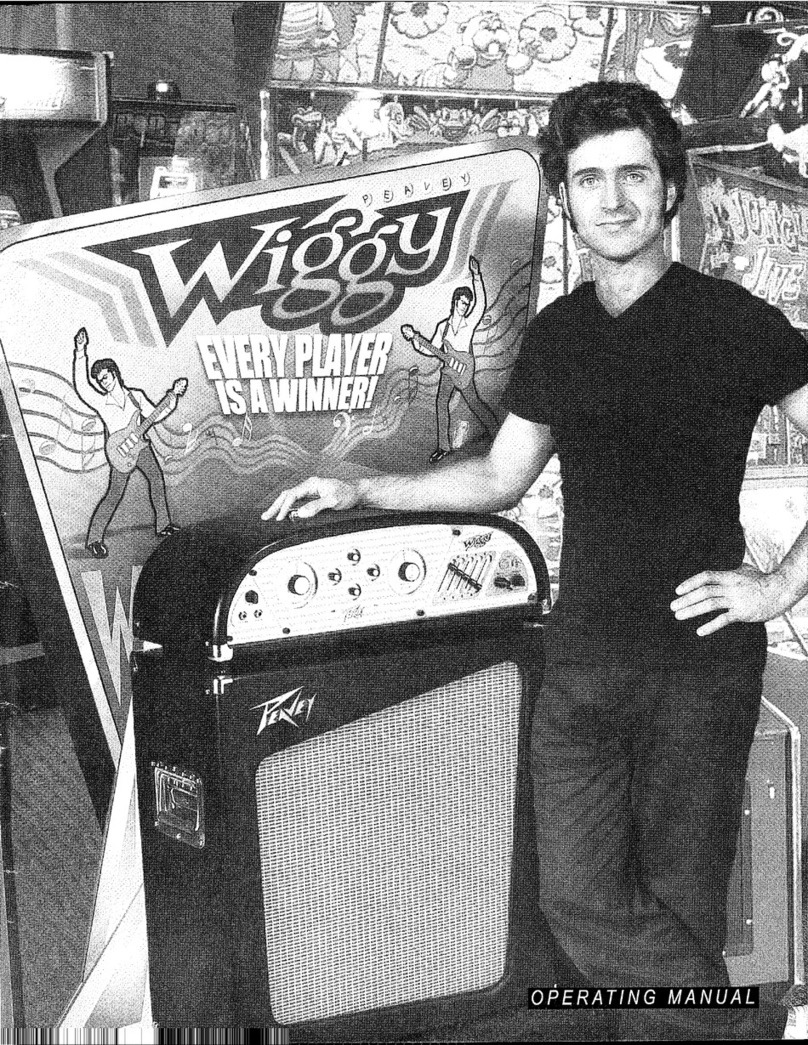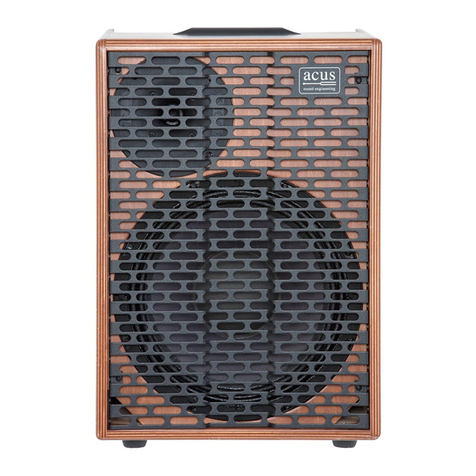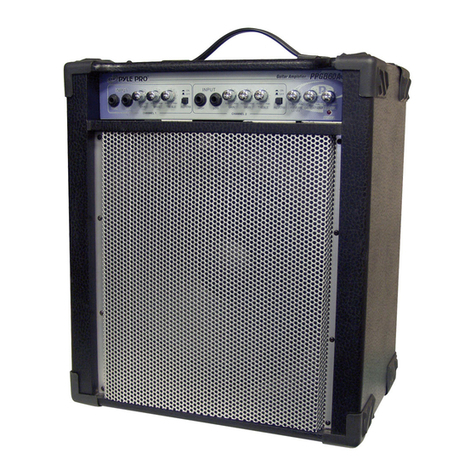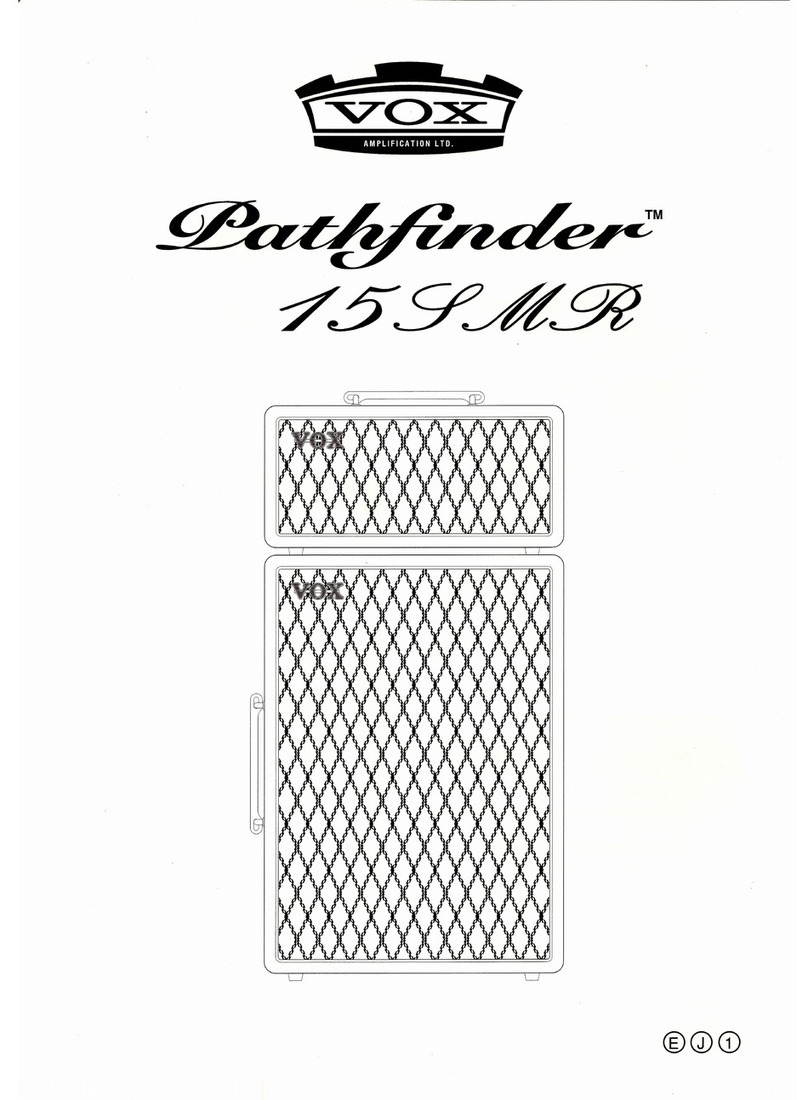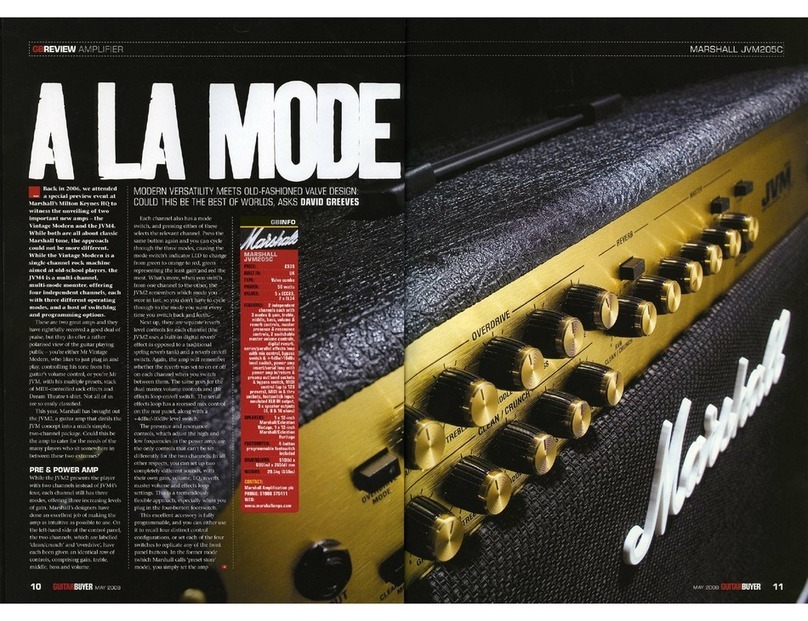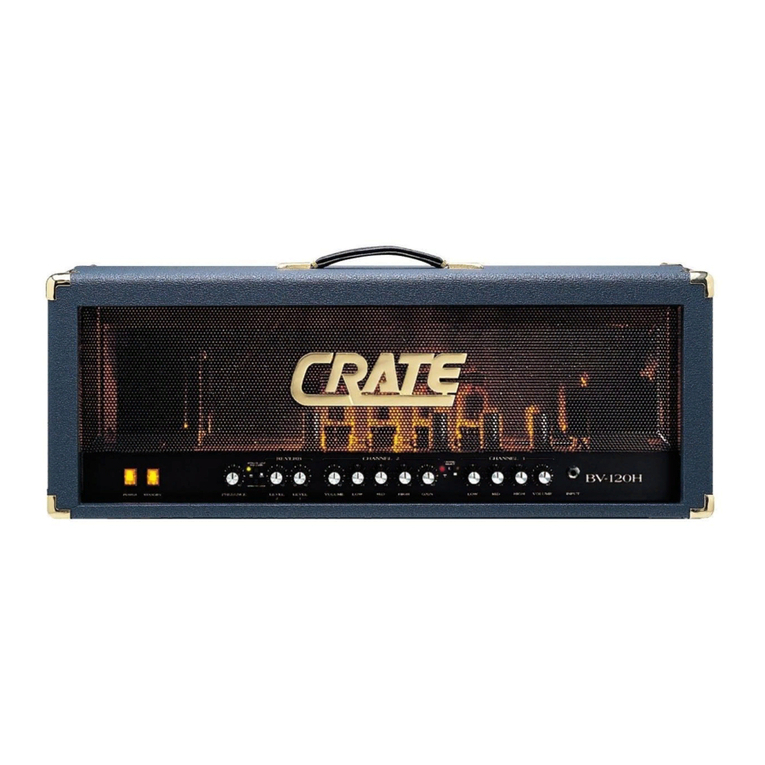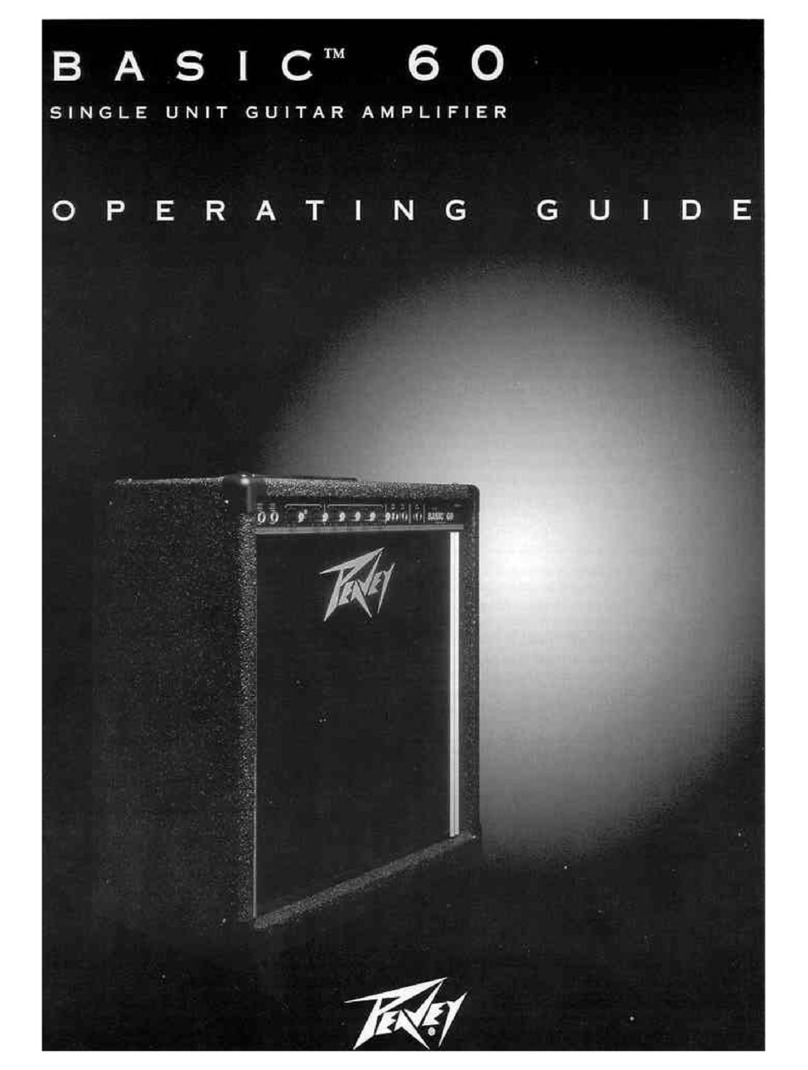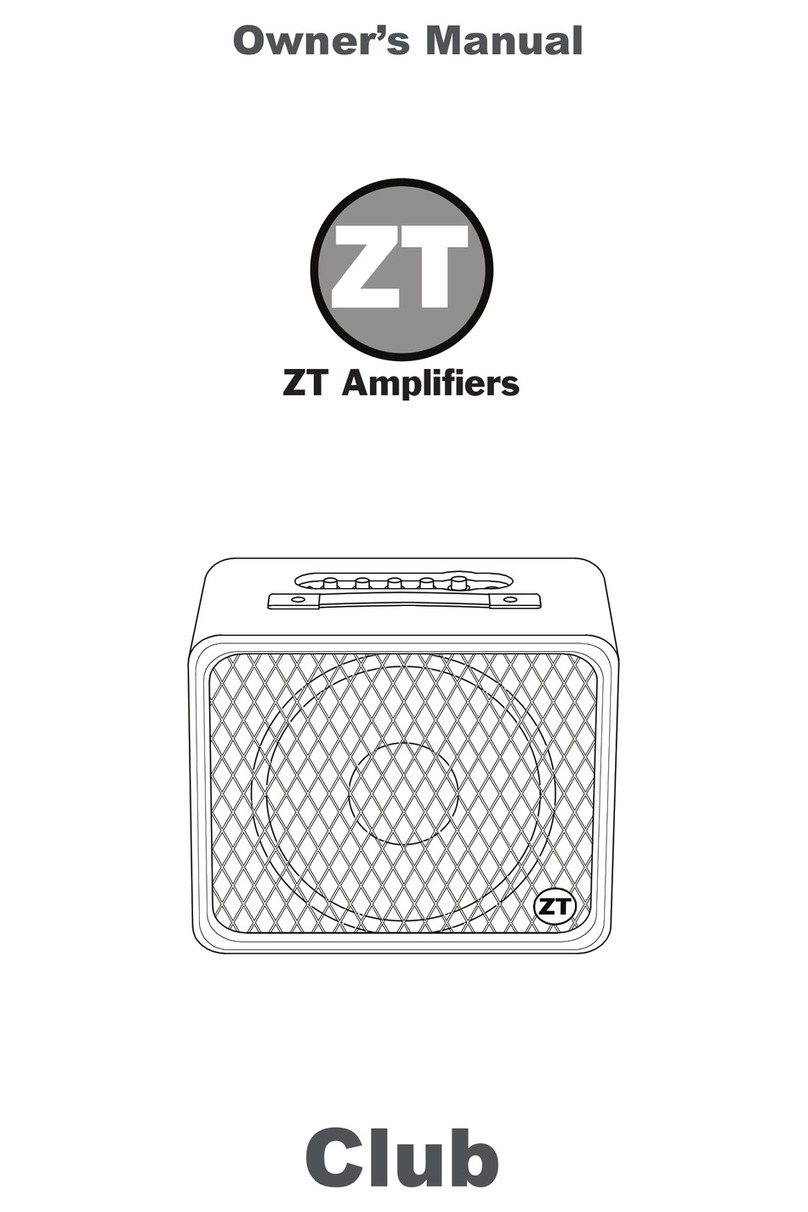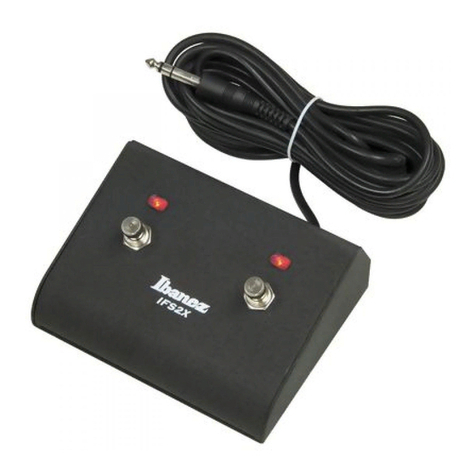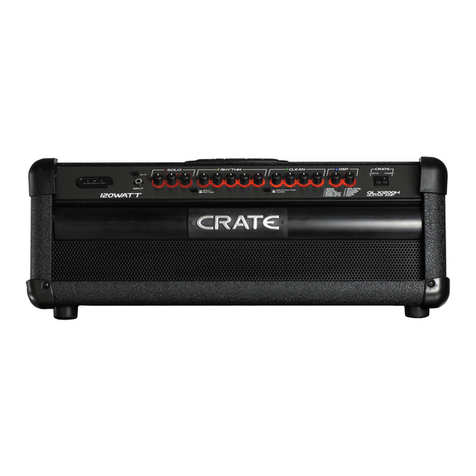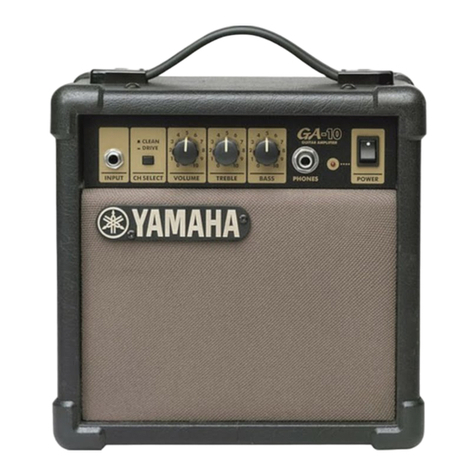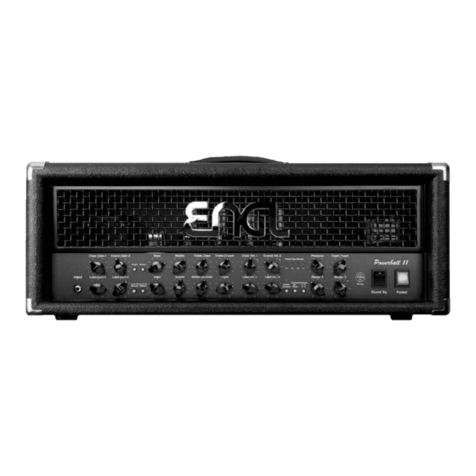CAUTION
RISK OF ELECTRIC SHOCK
DO NOT OPEN
SAFETY INSTRUCTIONS (EUROPEAN)
The conductors in the AC power cord are colored in accordance with the following code.
GREEN &YELLOW—Earth BLUE—Neutral BROWN—Live
U.K. MAIN PLUGWARNING: A molded main plug that has been cut off from the cord is
unsafe. NEVER UNDER ANY CIRCUMSTANCES SHOULDYOU INSERT A DAMAGED
OR CUT MAIN PLUG INTO A POWER SOCKET.
IMPORTANT! FOR YOUR PROTECTION, PLEASE READ THE FOLLOWING:
WATER AND MOISTURE: Appliance should not be used near water (near a bathtub, washbowl,
kitchen sink, laundry tub, in a wet basement, or near a swimming pool, etc). Care should be taken
so that objects do not fall and liquids are not spilled into the enclosure through openings.
POWERSOURCES: Theapplianceshouldbeconnectedtoapowersupplyonlyofthetypedescribed
in the operating instructions or as marked on the appliance.
GROUNDING OR POLARIZATION: Precautions should be taken so that the grounding or polar-
ization means of an appliance is not defeated.
POWER CORD PROTECTION: Power supply cords should be routed so that they are not likely
to be walked on or pinched by items placed upon or against them, paying particular attention
to cords at plugs, convenience receptacles, and the point where they exit from the appliance.
SERVICING: The user should not attempt to service the appliance beyond that described in the
operating instructions. All other servicing should be referred to qualified service personnel.
FUSING: If your unit is equipped with a fuse receptacle, replace only with the same type fuse.
Refer to replacement text on the unit for correct fuse type.
This symbol is intended to
alert the user to the pres-
ence of uninsulated “dan-
gerous voltage” within the
product’s enclosure that may be of suf-
ficient magnitude to constitute a risk of
electric shock to persons.
This symbol is
intended to alert the
user to the presence of
important operating
and maintenance (servicing) instruc-
tions in the literature accompanying
the appliance.
LIMITED WARRANTY
Your Carvin product is guaranteed against failure for ONE YEAR unless otherwise stated. Vacuum
tubesare guaranteedfor90 days. Carvin willserviceand supply allparts atno chargetothe customer
providing the unit is under warranty. Shipping costs are the responsibility of the customer. CARVIN
DOES NOT PAY FOR PARTS OR SERVICING OTHER THAN OUR OWN. A COPY OF THE ORIGINAL
INVOICEIS REQUIRED TOVERIFYYOUR WARRANTY. Carvinassumesno responsibility forhorn dri-
vers or speakers damaged by this unit. This warranty does not cover, and no liability is assumed, for
damage due to: natural disasters, accidents, abuse, loss of parts, lack of reasonable care, incorrect
use,orfailure tofollowinstructions. This warrantyisinlieuofallotherwarranties, expressedorimplied.
No representative or person is authorized to represent or assume for Carvin any liability in connection
with the sale or servicing of Carvin products. CARVIN SHALL NOT BE LIABLE FOR INCIDENTAL OR
CONSEQUENTIAL DAMAGES.
WhenRETURNINGmerchandiseto thefactory,youmaycall forareturn authorizationnumber. Describe
in writing each problem. If your unit is out of warranty, you will be charged the current FLAT RATE for
parts and labor to bring your unit up to factory specifications.
HELP SECTION
1) AMP WILL NOT TURN ON
Checkthepower totheamp. Check fortrippedcircuitbreakers,unpluggedextensioncords orpower-
strip switches that may be turned off. Check the fuse. If a dark brownish color or no wire can be
seen within the glass tube, then replace. The amp may be perfectly fine but occasionally a fuse
may blow because of high AC voltage surges. After the fuse has been replaced with the proper
Slow Blow value and if the fuse fails again, the amp will require servicing.
2) NO OUTPUT with POWER LIGHT ON
Tubesdamagedin shippingwillbe theprimary reasonforyour amptonot functionproperly. Please
give us a call to help guide you through this simple repair.
3) KEEP YOUR AMP LOOKING NEW
Usea damp cloth towipethe controls on thefront & rear chassispanels. Wipe the black vinylcov-
ering with a damp cloth.
REFER SERVICINGTO QUALIFIED SER-
VICE PERSONNEL!THIS UNIT CON-
TAINS HIGHVOLTAGE INSIDE!
CAUTION
RISK OF ELECTRIC SHOCK
Ref. # Description Carvin PN
B1 Junper, 0.5”, 0Ω51-00050
B2 Junper, 0.35”, 0Ω50-00035
B3 Junper, 0.5”, 0Ω51-00050
B4 Junper, 0.5”, 0Ω51-00050
B5 Junper, 0.5”, 0Ω51-00050
B7 Junper, 0.35”, 0Ω50-00035
B9 Junper, 0.5”, 0Ω51-00050
B10 Junper, 0.5”, 0Ω51-00050
B11 Junper, 0.35”, 0Ω50-00035
B12 Junper, 0.35”, 0Ω50-00035
B13 Junper, 0.35”, 0Ω50-00035
B14 Junper, 0.35”, 0Ω50-00035
B15 Junper, 0.35”, 0Ω50-00035
B16 Junper, 0.8”, 0Ω44-18000
B17 Junper, 0.5”, 0Ω51-00050
B18 Junper, 0.35”, 0Ω50-00035
B19 Junper, 0.5”, 0Ω51-00050
B20 Junper, 0.35”, 0Ω50-00035
B22 Junper, 0.35”, 0Ω50-00035
B23 Junper, 0.8”, 0Ω44-18000
B24 Junper, 0.35”, 0Ω50-00035
B25 Junper, 0.35”, 0Ω50-00035
B26 Junper, 0.35”, 0Ω50-00035
B27 Junper, 0.35”, 0Ω50-00035
B28 Junper, 0.35”, 0Ω50-00035
B29 Junper, 0.5”, 0Ω51-00050
B30 Junper, 0.5”, 0Ω51-00050
B31 Junper, 0.5”, 0Ω51-00050
B32 Junper, 0.8”, 0Ω44-18000
B33 Junper, 0.8”, 0Ω44-18000
B34 Junper, 0.5”, 0Ω51-00050
B35 Junper, 0.35”, 0Ω50-00035
B36 Junper, 0.35”, 0Ω50-00035
B37 Junper, 0.35”, 0Ω50-00035
B50 Junper, 0.5”, 0Ω51-00050
C1 Capacitor, Electrolytic, 10µF 50V, 20% 47-10051
C2 Capacitor, Poly, 0.01µF 100V, 10% 46-10312
C4 Capacitor, Poly, 0.001µF 100V, 10% 46-10212
C5 Capacitor, Poly, 0.033µF 100V, 10% 46-33312
C6 Capacitor, Ceramic, 120PF 500V, 10% 45-12152
C7 Capacitor, Poly, 0.01µF 100V, 10% 46-10312
C8 Capacitor, Electrolytic, 10µF 50V, 20% 47-10051
C9 Capacitor, Mylar, 0.047µF 400V, 10% 41-47342
C10 Not Used
C11 Capacitor, Electrolytic, 10µF 50V, 20% 47-10051
C12 Capacitor, Poly, 0.0033µF 100V, 10% 46-33212
C13 Capacitor, Ceramic, 250PF 500V, 5% 45-25152
C14 Capacitor, Ceramic, 560PF 500V, 10% 45-56152
C15 Not Used
C16 Capacitor, Ceramic, 0.0047µF 400V, 10% 41-47242
C17 Capacitor, Electrolytic, 10µF 50V, 20% 47-10051
C18 Capacitor, Mylar, 0.047µF 400V, 10% 41-47342
C19 Capacitor, Ceramic, 120PF 500V, 10% 45-12152
C20 Capacitor, Poly, 0.022µF 100V, 10% 46-22312
C21 Capacitor, Poly, 0.0022µF 100V, 10% 46-22212
C22 Capacitor, Poly, 0.0022µF 100V, 10% 46-22212
C23 Not Used
C24 Not Used
C25 Capacitor, Poly, 0.047µF 100V, 10% 46-47312
C26 Capacitor, Ceramic, 82PF 500V, 5% 45-82052
C27 Capacitor, Electrolytic, 10µF 50V, 20% 47-10051
C28 Capacitor, Mylar, 0.047µF 400V, 10% 41-47342
C29 Capacitor, Poly, 0.0022µF 100V, 10% 46-22212
C30 Capacitor, Electrolytic, 10µF 50V, 20% 47-10051
C31 Capacitor, Poly, 0.0022µF 100V, 10% 46-22212
C32 Not Used
C33 Capacitor, Poly, 0.001µF 100V, 10% 46-10212
C34 Capacitor, Ceramic, 56PF 500V, 5% 45-56052
C35 Capacitor, Poly, 0.047µF 100V, 10% 46-47312
C36 Capacitor, Mylar, 0.047µF 400V, 10% 41-47342
C37 Capacitor, Mylar, 0.047µF 400V, 10% 41-47342
Ref. # Description Carvin PN
C38 Capacitor, Electrolytic, 47µF 63V, 20% 47-47061
C39 Capacitor, Mylar, 0.047µF 630V, 10% 46-47362
C40 Capacitor, Electrolytic, 22µF 500V, 20% 42-20052
C41 Capacitor, Electrolytic, 22µF 500V, 20% 42-20052
C42 Capacitor, Electrolytic, 22µF 500V, 20% 42-20052
C43 Capacitor, Electrolytic, 22µF 500V, 20% 42-20052
C44 Capacitor, Electrolytic, 22µF 500V, 20% 42-20052
C45 Capacitor, Electrolytic, 2200uF 6.3V, 20% 47-22260
C46 Capacitor, Electrolytic, 2200uF 6.3V, 20% 47-22260
C47 Capacitor, Electrolytic, 2200uF 6.3V, 20% 47-22260
C48 Capacitor, Mylar, 0.047µF 630V, 10% 46-47362
C49 Not Used
C50 Capacitor, Poly, 0.0022µF 100V, 10% 46-22212
C70 Capacitor, Poly, 0.01µF 100V, 10% 46-10312
C71 Capacitor, Ceramic, 180PF 500V, 10% 45-18152
C72 Capacitor, Ceramic, 120PF 500V, 10% 45-12152
D1 Diode, 1N4745A 16V, 1W 60-47450
D2 Diode, 1N4745A 16V, 1W 60-47450
D3 Diode, 1N4745A 16V, 1W 60-47450
D4 Diode, 1N4745A 16V, 1W 60-47450
D5 Diode, 1N4003 200V, 1A 60-40030
D6 Diode, 1N4007A 1000V, 1A 60-10000
D7 Diode, 1N4007A 1000V, 1A 60-10000
D8 Diode, 1N4007A 1000V, 1A 60-10000
D9 Diode, 1N4007A 1000V, 1A 60-10000
D10 Diode, 1N4007A 1000V, 1A 60-10000
D11 Diode, 1N4007A 1000V, 1A 60-10000
D12 Diode, 1N4007A 1000V, 1A 60-10000
D13 Diode, 1N4007A 1000V, 1A 60-10000
D14 Diode, 1N4007A 1000V, 1A 60-10000
D15 Diode, 1N4007A 1000V, 1A 60-10000
D16 Diode, 1N4007A 1000V, 1A 60-10000
D20 Not Used
D21 Not Used
F1 Fuse Clips, (1 pair) 23-03529
Fuse 1AGC Fast 70-21010
F2 Fuse Clips, (1 pair) 23-03529
Fuse 10A Slow 70-22101
F3 Fuse Clips, (1 pair) 23-03529
Fuse 1AGC Fast 70-21010
G1 Ferrite Bead 15-27430
H1A Cable 10” 2 conductor + Shield 05-00110
H2A Conn. Header, 2 Pin Vert, SHS 23-11002
H2B Conn. Header, 2 Pin Vert, SHS 23-11002
H3A Conn. Header, 4 Pin Vert, SHS 23-11004
H3B Conn. Header, 4 Pin Vert, SHS 23-11004
H5 Wire 10”, 18GA (Pair) 04-18010
H6 Wire 4”, 18GA (Pair) 04-18040
H7A Conn. Header, 2 Pin Vert, SHS 23-11002
H7B Conn. Header, 2 Pin Vert, SHS 23-11002
H8A Conn. Header, 2 Pin Vert, SHS 23-11002
H8B Conn. Header, 2 Pin Vert, SHS 23-11002
J1 Phone Jack, 1/4, 90° Rev Threaded Neck 21-01804
J2 Phone Jack, 1/4, 3 Pin Plastic, 24mm 21-06453
J3 Phone Jack, 1/4, 3 Pin Plastic, 24mm 21-06453
J4 Phone Jack, 1/4, 3 Pin Plastic, 24mm 21-06453
J5 Phone Jack, 1/4, 7 Pin Plastic Stereo, 24mm 21-06457
L1 Relay 3V PCB MNT, 5V DPDT 70-05303
L2 Relay 3V PCB MNT, 5V DPDT 70-05303
P1 Potentiometer, B100K, O Shaft, 16mm, RX250 90° 71-14052
P2 Potentiometer, B1MEG, O Shaft, 16mm, RX250 90° 71-14070
P3 Potentiometer, 25A25K, O Shaft, 16mm, RX250 90° 71-14050
P4 Potentiometer, B1MEG, O Shaft, 16mm, RX250 90° 71-14070
P5 Potentiometer, 5A500K, O Shaft, 16mm, RX250 90° 71-14060
P6 Potentiometer, B100K, O Shaft, 16mm, RX250 90° 71-14052
P7 Potentiometer, B1MEG, O Shaft, 16mm, RX250 90° 71-14070
P8 Potentiometer, 25A25K, O Shaft, 16mm, RX250 90° 71-14050
P9 Potentiometer, B100K, O Shaft, 16mm, RX250 90° 71-14052
P10 Potentiometer, B100K, O Shaft, 16mm, RX250 90° 71-14052
P11 Potentiometer, Trimmer, 20K PCB MTG 71-22012
P21 Potentiometer, 25A15K-C, O Shaft, 16mm, RX250 90° 71-14048
Ref. # Description Carvin PN
QC1 Spade Terminal, QC Vertical, 0.205 06-40045
QC2 Spade Terminal, QC Vertical, 0.205 06-40045
QC3 Spade Terminal, QC Vertical, 0.205 06-40045
QC4 Spade Terminal, QC Vertical, 0.205 06-40045
QC6A Spade Terminal, QC Vertical, 0.250 06-40050
QC6B Spade Terminal, QC Vertical, 0.250 06-40050
QC7 Spade Terminal, QC Vertical, 0.250 06-40050
QC8 Spade Terminal, QC Vertical, 0.250 06-40050
QC9 Spade Terminal, QC Vertical, 0.250 06-40050
QC13ASpade Terminal, QC Vertical, 0.250 06-40050
QC13BSpade Terminal, QC Vertical, 0.250 06-40050
QC14 Spade Terminal, QC Vertical, 0.250 06-40050
QC31 Spade Terminal, QC Vertical, 0.250 06-40050
QC32 Spade Terminal, QC Vertical, 0.250 06-40050
QC33 Spade Terminal, QC Vertical, 0.250 06-40050
QC35 Spade Terminal, QC Vertical, 0.250 06-40050
QC36 Spade Terminal, QC Vertical, 0.250 06-40050
QC37 Spade Terminal, QC Vertical, 0.250 06-40050
R1 Resistor, 100K, .35 Prep., 5% Carbon, 1/4W 50-10055
R2 Resistor, 1.5K, .35 Prep., 5% Carbon, 1/4W 50-15035
R3 Resistor, 220K, .35 Prep., 5% Carbon, 1/4W 50-22055
R4 Resistor, 150K, .35 Prep., 5% Carbon, 1/4W 50-15055
R5 Resistor, 100K, .35 Prep., 5% Carbon, 1/4W 50-10055
R6 Resistor, 1.5K, .35 Prep., 5% Carbon, 1/4W 50-15035
R7 Resistor, 220K, .35 Prep., 5% Carbon, 1/4W 50-22055
R8 Resistor, 1.5K, .35 Prep., 5% Carbon, 1/4W 50-15035
R9 Resistor, 220K, .35 Prep., 5% Carbon, 1/4W 50-22055
R10 Resistor, 4.7K, .35 Prep., 5% Carbon, 1/4W 50-47035
R11 Resistor, 220K, .35 Prep., 5% Carbon, 1/4W 50-22055
R12 Resistor, 47K, .35 Prep., 5% Carbon, 1/4W 50-47045
R13 Resistor, 1K, .35 Prep., 5% Carbon, 1/4W 50-10035
R14 Resistor, 220K, .35 Prep., 5% Carbon, 1/4W 50-22055
R15 Resistor, 47K, .35 Prep., 5% Carbon, 1/4W 50-47045
R16 Resistor, 10K, .35 Prep., 5% Carbon, 1/4W 50-10045
R17 Resistor, 22K, .35 Prep., 5% Carbon, 1/4W 50-22045
R18 Resistor, 100K, .35 Prep., 5% Carbon, 1/4W 50-10055
R19 Resistor, 220Ω, .35 Prep., 5% Carbon, 1/4W 50-22025
R20 Resistor, 2.2M, .35 Prep., 5% Carbon, 1/4W 50-22065
R21 Resistor, 47K, 0.8 Prep., 5% Carbon 1W 53-47045
R22 Resistor, 2.2M, .35 Prep., 5% Carbon, 1/4W 50-22065
R23 Resistor, 220K, .35 Prep., 5% Carbon, 1/4W 50-22055
R24 Resistor, 1.5K, .35 Prep., 5% Carbon, 1/4W 50-15035
R25 Resistor, 220K, .35 Prep., 5% Carbon, 1/4W 50-22055
R26 Resistor, 1M, .35 Prep., 5% Carbon, 1/4W 50-10065
R27 Resistor, 22K, .35 Prep., 5% Carbon, 1/4W 50-22045
R28 Resistor, 1.5K, .35 Prep., 5% Carbon, 1/4W 50-15035
R29 Resistor, 220K, .35 Prep., 5% Carbon, 1/4W 50-22055
R30 Resistor, 100K, .35 Prep., 5% Carbon, 1/4W 50-10055
R31 Resistor, 560Ω, .35 Prep., 5% Carbon, 1/4W 50-56025
R32 Resistor, 100K, .35 Prep., 5% Carbon, 1/4W 50-10055
R33 Resistor, 22K, .35 Prep., 5% Carbon, 1/4W 50-22045
R34 Resistor, 22K, .35 Prep., 5% Carbon, 1/4W 50-22045
R35 Resistor, 100K, .35 Prep., 5% Carbon, 1/4W 50-10055
R36 Resistor, 100K, .35 Prep., 5% Carbon, 1/4W 50-10055
R37 Resistor, 220K, .35 Prep., 5% Carbon, 1/4W 50-22055
R38 Resistor, 220K, .35 Prep., 5% Carbon, 1/4W 50-22055
R39 Resistor, 3.9K, .35 Prep., 5% Carbon, 1/4W 50-39035
R40 Resistor, 100K, .35 Prep., 5% Carbon, 1/4W 50-10055
R41 Resistor, 4.7K, .35 Prep., 5% Carbon, 1/4W 50-47035
R42 Resistor, 2.2K, .35 Prep., 5% Carbon, 1/4W 50-22035
R43 Resistor, 350Ω., SDOF, 10% Sand Bar,10W 56-35010
R44 Resistor, 100Ω, 0.35 Prep., 1% Metal, 1/4W 50-10021
R45 Resistor, 100Ω, 0.35 Prep., 1% Metal, 1/4W 50-10021
R46 Resistor, 10Ω, 0.5 Prep., 5% Carbon, 1/2W 52-10015
R49 Resistor, 100K, .35 Prep., 5% Carbon, 1/4W 50-10055
R50 Resistor, 1MEG, .35 Prep., 5% Carbon, 1/4W 50-10065
R57 Resistor, 4.7K, .35 Prep., 5% Carbon, 1/4W 50-47035
R60 Resistor, 56K, .35 Prep., 5% Carbon, 1/4W 50-56045
R61 Resistor, 56K, .35 Prep., 5% Carbon, 1/4W 50-56045
R62 Resistor, 350Ω, .35 Prep., 5% Carbon, 1/4W 50-35025
R63 Resistor, 350Ω, .35 Prep., 5% Carbon, 1/4W 50-35025
Ref. # Description Carvin PN
R64 Resistor, 56K, .35 Prep., 5% Carbon, 1/4W 50-56045
R65 Resistor, 56K, .35 Prep., 5% Carbon, 1/4W 50-56045
R66 Resistor, 350Ω, .35 Prep., 5% Carbon, 1/4W 50-35035
R67 Resistor, 350Ω, .35 Prep., 5% Carbon, 1/4W 50-35035
R70 Resistor, 2.2K, .35 Prep., 5% Carbon, 1/4W 50-22035
R71 Resistor, 10K, .35 Prep., 5% Carbon, 1/4W 50-10035
R72 Resistor, 470K, .35 Prep., 5% Carbon, 1/4W 50-47045
R73 Resistor, 22K, .35 Prep., 5% Carbon, 1/4W 50-22045
S1 Switch, DP3T Lift Tall Bat, PCB MTG 25-76286
Switch, Channel Select, SPST toggle, Chassis MTG 25-75801
Switch, Power, LG DPDT, Chassis MTG 25-31350
Switch, Stand-by, LG DPDT, Chassis MTG 25-31350
SPK1 Phone Jack, 1/4, 3 Pin Plastic, 24mm 21-06453
SPK2 Phone Jack, 1/4, 3 Pin Plastic, 24mm 21-06453
Vintage Tube 50, 120V Transformer, Chassis MTG 15-10640
Vintage Tube 50, Output Transformer, Chassis MTG 15-02066
V1 Socket for 12AX7A/EL84 12VAC, 9 Pin, SIN/RUS 23-91632
Vacuum Tube, Type Tube 12AX7A 65-00127
V2 Socket for 12AX7A/EL84 12VAC, 9 Pin, SIN/RUS 23-91632
Vacuum Tube, Type Tube 12AX7A 65-00127
V3 Socket for 12AX7A/EL84 12VAC, 9 Pin, SIN/RUS 23-91632
Vacuum Tube, Type Tube 12AX7A 65-00127
V4 Socket for 12AX7A/EL84 12VAC, 9 Pin, SIN/RUS 23-91632
Vacuum Tube, Type Tube 12AX7A 65-00127
V5 Socket for 12AX7A/EL84 12VAC, 9 Pin, SIN/RUS 23-91632
Vacuum Tube, Type Tube 12AX7A 65-00127
V6 Socket for 12AX7A/EL84 12VAC, 9 Pin, SIN/RUS 23-91632
Vacuum Tube, Type Tube EL84 65-00084
V7 Socket for 12AX7A/EL84 12VAC, 9 Pin, SIN/RUS 23-91632
Vacuum Tube, Type Tube EL84 65-00084
V8 Socket for 12AX7A/EL84 12VAC, 9 Pin, SIN/RUS 23-91632
Vacuum Tube, Type Tube EL84 65-00084
V9 Socket for 12AX7A/EL84 12VAC, 9 Pin, SIN/RUS 23-91632
Vacuum Tube, Type Tube EL84 65-00084
REPLACEMENT PARTS LIST
(for circuit cards)


